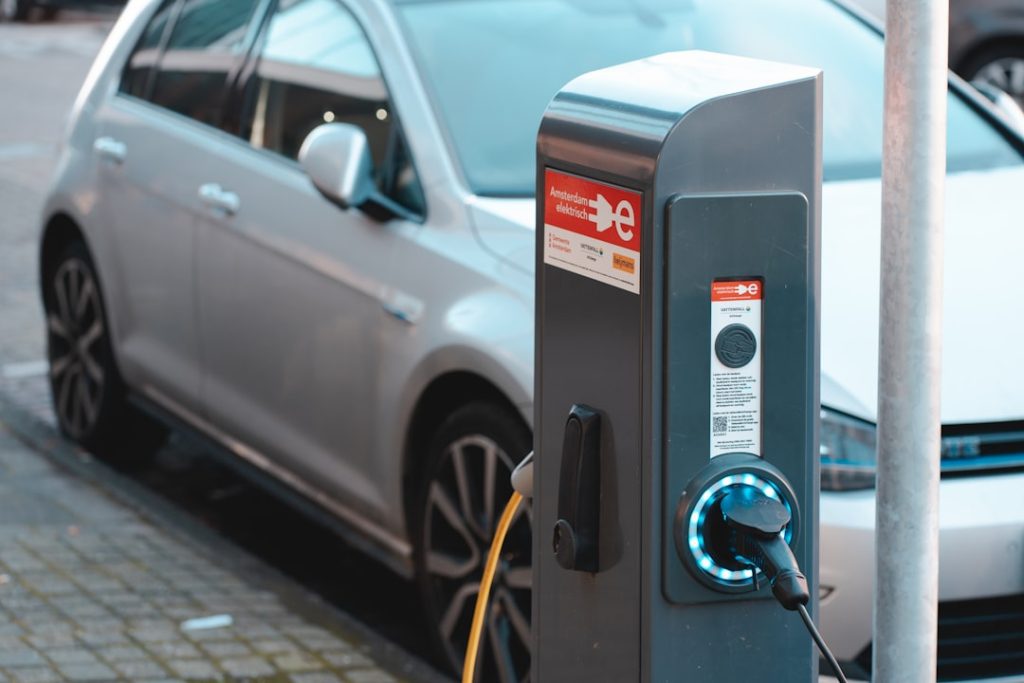The importance of sustainable fuel distribution has grown significantly in recent years, driven by environmental concerns and the limited nature of fossil fuel resources. As global population and energy demand increase, particularly for transportation fuels, traditional distribution methods relying on non-renewable resources face increasing pressure and environmental consequences. To address rising fuel demand while minimizing ecological impact, it is essential to develop and implement sustainable fuel distribution practices.
The volatility of oil prices and geopolitical tensions in oil-producing regions have underscored the necessity for diversification in fuel sources and distribution methods. Investing in sustainable fuel distribution allows countries to reduce their reliance on fossil fuels and mitigate risks associated with traditional energy sources. This approach enhances energy security while promoting economic stability and resilience against global energy market fluctuations.
Consequently, the push for sustainable fuel distribution is motivated by environmental, economic, and geopolitical factors.
Key Takeaways
- Sustainable fuel distribution is necessary to reduce the environmental impact of traditional fuel transportation and consumption.
- Innovations in fuel distribution technology, such as electric vehicles and biofuels, are key to achieving sustainable fuel distribution.
- Renewable energy plays a crucial role in sustainable fuel distribution by providing alternative sources of energy for transportation and distribution.
- Sustainable practices in fuel transportation, such as using fuel-efficient vehicles and optimizing delivery routes, can minimize carbon emissions and reduce environmental impact.
- Implementing sustainable fuel distribution practices can significantly reduce air and water pollution, as well as mitigate the effects of climate change on the environment.
Innovations in Fuel Distribution Technology
Advanced Fuel Storage and Distribution Systems
One notable innovation is the development of advanced fuel storage and distribution systems designed to minimize fuel losses and reduce environmental impact. These systems utilize state-of-the-art materials and technologies to prevent leaks, spills, and emissions, thereby improving the overall sustainability of fuel distribution.
Digital Technologies in Fuel Distribution
Another significant innovation is the advancement of digital technologies in fuel distribution, such as smart meters and monitoring systems. These technologies enable real-time tracking of fuel consumption and distribution, allowing for more efficient management of fuel resources and reducing waste. Additionally, the use of digital platforms and mobile applications has streamlined the process of fuel ordering and delivery, making it more convenient for both suppliers and consumers.
Infrastructure Innovations for Alternative Fuels
Furthermore, the emergence of alternative fuel sources, such as biofuels and hydrogen, has led to innovations in fuel distribution infrastructure. This includes the development of specialized storage and transportation systems for these alternative fuels, as well as the integration of refueling stations into existing fuel distribution networks. These innovations are crucial in promoting the adoption of sustainable fuel sources and reducing reliance on traditional fossil fuels.
The Role of Renewable Energy in Fuel Distribution

Renewable energy plays a crucial role in sustainable fuel distribution by providing alternative sources of energy that are environmentally friendly and abundant. One of the most prominent examples of renewable energy in fuel distribution is biofuels, which are derived from organic materials such as crops, agricultural residues, and waste oils. Biofuels offer a sustainable alternative to traditional fossil fuels and can be easily integrated into existing fuel distribution infrastructure.
In addition to biofuels, hydrogen is another renewable energy source that holds great potential for sustainable fuel distribution. Hydrogen can be produced from water using renewable energy sources such as solar or wind power, making it a clean and abundant fuel source. The use of hydrogen in fuel distribution not only reduces greenhouse gas emissions but also promotes energy independence and security.
Furthermore, renewable energy technologies such as solar and wind power can be utilized to power fuel distribution facilities and transportation vehicles, further reducing the environmental impact of fuel distribution. By integrating renewable energy into fuel distribution processes, countries can reduce their carbon footprint and contribute to global efforts to combat climate change.
Sustainable Practices in Fuel Transportation
| Metrics | Data |
|---|---|
| Reduction in CO2 emissions | 20% by 2030 |
| Investment in alternative fuels | 1 billion over 5 years |
| Number of electric vehicles in fleet | 100 by 2022 |
| Use of biofuels | 30% of total fuel consumption |
Sustainable practices in fuel transportation are essential for minimizing environmental impact and ensuring the efficient delivery of fuel to consumers. One key sustainable practice is the optimization of transportation routes and logistics to reduce fuel consumption and emissions. This can be achieved through the use of advanced routing algorithms, vehicle telematics, and real-time traffic data to identify the most efficient delivery routes and minimize idle time.
Another important sustainable practice is the use of alternative fuel vehicles for transportation, such as electric or hybrid trucks. These vehicles produce lower emissions compared to traditional diesel trucks and can be powered by renewable energy sources, further reducing their environmental impact. Additionally, the use of alternative fuel vehicles can help reduce dependence on fossil fuels and promote the adoption of sustainable transportation practices.
Furthermore, the implementation of fuel-efficient driving techniques and vehicle maintenance programs can contribute to sustainable fuel transportation. By promoting eco-driving habits among drivers and ensuring proper maintenance of transportation vehicles, companies can reduce fuel consumption and emissions while extending the lifespan of their fleet.
The Impact of Sustainable Fuel Distribution on the Environment
Sustainable fuel distribution has a significant impact on the environment by reducing greenhouse gas emissions, minimizing air and water pollution, and conserving natural resources. By promoting the use of renewable energy sources and implementing sustainable practices in fuel distribution, countries can significantly reduce their carbon footprint and contribute to global efforts to combat climate change. One of the key environmental benefits of sustainable fuel distribution is the reduction of air pollution from vehicle emissions.
By promoting the use of cleaner alternative fuels and implementing fuel-efficient transportation practices, countries can improve air quality and public health in urban areas where vehicle emissions are a major concern. Furthermore, sustainable fuel distribution helps conserve natural resources by reducing the extraction and consumption of non-renewable fossil fuels. This not only helps preserve natural habitats and ecosystems but also reduces the environmental impact of resource extraction activities such as drilling and mining.
Additionally, sustainable fuel distribution can help minimize water pollution by preventing leaks and spills from storage tanks and transportation vehicles. By utilizing advanced storage and distribution technologies that are designed to prevent environmental contamination, countries can protect water sources and aquatic ecosystems from potential harm.
The Future of Sustainable Fuel Distribution

Advancements in Renewable Energy Technologies
As renewable energy technologies continue to improve and become more cost-competitive, the adoption of sustainable fuel sources such as biofuels and hydrogen is expected to increase significantly in the coming years.
Optimizing Fuel Distribution with Digital Technologies
Furthermore, advancements in digital technologies and data analytics are expected to further optimize fuel distribution processes, leading to greater efficiency and reduced environmental impact. The integration of smart meters, IoT devices, and predictive analytics will enable real-time monitoring and management of fuel distribution networks, allowing for more precise control over energy resources.
Policy Support for Sustainable Fuel Distribution
Moreover, policy support from governments and international organizations is crucial for promoting sustainable fuel distribution. Incentives such as tax credits, subsidies, and regulatory frameworks can encourage investment in renewable energy infrastructure and promote the adoption of sustainable transportation practices.
Challenges and Opportunities in Implementing Sustainable Practices in Fuel Distribution
While there are numerous opportunities for implementing sustainable practices in fuel distribution, there are also several challenges that need to be addressed. One of the main challenges is the high initial investment required for transitioning to sustainable fuel sources and infrastructure. However, this challenge also presents an opportunity for innovation and job creation in the renewable energy sector.
Another challenge is the need for collaboration among stakeholders in the fuel distribution industry, including suppliers, distributors, regulators, and consumers. Effective collaboration is essential for developing cohesive strategies for transitioning to sustainable fuel distribution practices and overcoming barriers such as infrastructure limitations and market uncertainties. Furthermore, public awareness and education play a crucial role in driving the transition towards sustainable fuel distribution.
By raising awareness about the environmental benefits of renewable energy sources and promoting sustainable transportation practices, countries can encourage consumer demand for cleaner fuels and drive market transformation. In conclusion, sustainable fuel distribution is essential for meeting the growing demand for energy while minimizing environmental impact and promoting energy security. By embracing innovative technologies, renewable energy sources, and sustainable practices in fuel transportation, countries can reduce their carbon footprint, improve air quality, conserve natural resources, and contribute to global efforts to combat climate change.
While there are challenges in implementing sustainable practices in fuel distribution, there are also numerous opportunities for innovation, job creation, and collaboration among stakeholders. With continued support from governments, advancements in technology, and public awareness, the future of sustainable fuel distribution looks promising.
If you’re interested in sustainable fuel distribution, you may also want to check out this article on efficient heating with briquettes as a sustainable solution. (source) It discusses the benefits of using briquettes as a renewable and efficient alternative to traditional fuels. This could be a great complement to your understanding of sustainable fuel distribution.
FAQ
What is sustainable fuel distribution?
Sustainable fuel distribution refers to the process of delivering alternative and renewable fuels, such as biofuels, hydrogen, and electric power, to end users in an environmentally responsible and efficient manner.
Why is sustainable fuel distribution important?
Sustainable fuel distribution is important because it helps reduce greenhouse gas emissions, dependence on fossil fuels, and air pollution. It also supports the transition to a more sustainable and renewable energy future.
What are some examples of sustainable fuels?
Examples of sustainable fuels include biodiesel, ethanol, hydrogen, natural gas, and electricity. These fuels are produced from renewable resources and have lower environmental impacts compared to traditional fossil fuels.
How is sustainable fuel distribution different from traditional fuel distribution?
Sustainable fuel distribution differs from traditional fuel distribution in that it focuses on delivering alternative and renewable fuels, often from different sources and using different infrastructure. It also prioritizes environmental sustainability and reducing carbon emissions.
What are the challenges of sustainable fuel distribution?
Challenges of sustainable fuel distribution include the need for infrastructure development, such as refueling stations for electric vehicles and hydrogen fueling stations, as well as the integration of renewable energy sources into the distribution network. Additionally, the cost and availability of sustainable fuels can be a challenge.
How can sustainable fuel distribution benefit the environment?
Sustainable fuel distribution can benefit the environment by reducing greenhouse gas emissions, air pollution, and reliance on finite fossil fuel resources. It also supports the development of renewable energy technologies and promotes a more sustainable energy system.



